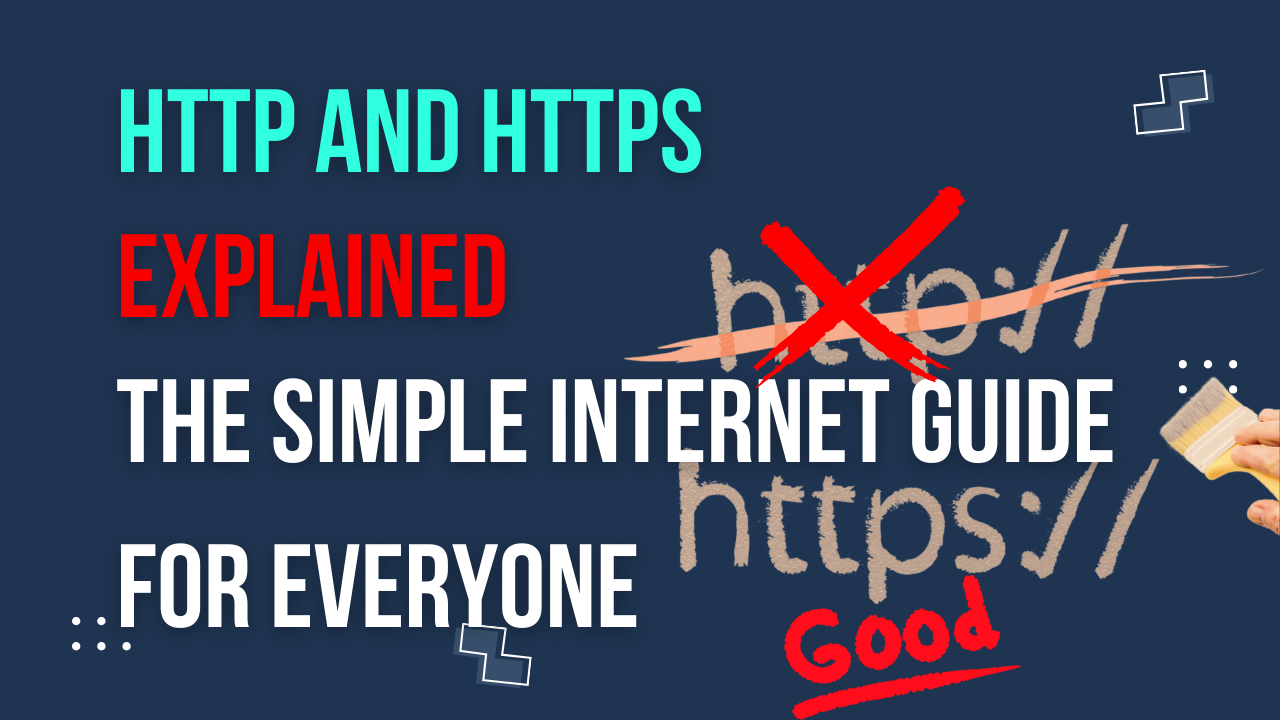Table of Contents

Introduction to HTTP and HTTPS
In our digital world, HTTP (Hypertext Transfer Protocol) and HTTPS (Hypertext Transfer Protocol Secure) are like the postal services of the internet. They are the methods by which information is exchanged between your web browser (like Google Chrome or Safari) and the websites you visit.
Understanding HTTP: The Basic Mail Service
- What is HTTP?: Imagine HTTP as a basic mail service. It’s the standard way that information travels on the internet.
- Example for Kids: Think of HTTP like sending a letter to a friend using a regular mailman. The letter travels from your house (your computer) to your friend’s house (the website).
- The Process: When you type a website’s address using HTTP, your browser sends a request. This request is like asking, “Can I see your webpage?” The server, which is like the post office for websites, sends the webpage back to your browser.
- Risks of HTTP: Just like a postcard, the information sent via HTTP is not hidden. Anyone who intercepts it can read what’s inside. That’s why HTTP is not recommended for sharing personal or sensitive information.
Exploring HTTPS: The Secure Mail Service
- What is HTTPS?: HTTPS adds a layer of security to HTTP. It’s like sending your letter in a locked box instead of an open envelope.
- How it Works: When you visit an HTTPS site, your browser and the website create a secret code. This code scrambles the information you send and receive. Only your browser and the website can decode it, making your information unreadable to others.
- Why HTTPS Matters: Using HTTPS is like having a trusted mail carrier who locks your letters in a safe. It helps protect your personal information, like passwords and credit card numbers, from being stolen.
HTTP vs. HTTPS: The Comparison
- Speed: Initially, HTTPS was a bit slower than HTTP because of the extra security steps. However, with modern technology, this difference is barely noticeable.
- Use Cases: HTTP is fine for browsing simple, informational websites. But for online shopping, banking, or anything involving personal data, HTTPS is a must.
- Visibility: With HTTP, the data you send can be seen by others. With HTTPS, it’s like the information is hidden in a secret code.
How to Identify HTTPS
- Check the URL: Look at the website’s address in your browser. If it starts with “https://”, it’s using HTTPS. If it just says “http://”, it’s not secure.
- The Padlock Icon: Many web browsers show a padlock next to the website’s address to indicate it’s secure with HTTPS. If you don’t see a padlock, the website might not be using HTTPS.
The Importance of HTTPS in Today’s Internet
- Building Trust: When a website uses HTTPS, it shows they care about your privacy and security. It’s like a stamp of approval for safety.
- Search Engine Ranking: Google and other search engines prefer HTTPS websites. They’re often ranked higher in search results, like getting a gold star for safety.
- Data Integrity: HTTPS ensures that the information you see on a website hasn’t been tampered with during its journey across the internet.
The Transition to HTTPS
- Website Owners’ Role: It’s up to website owners to switch from HTTP to HTTPS. This involves getting a special security certificate that helps create the secure connection.
- The Push for Security: There’s a big push for more websites to use HTTPS. Browsers like Chrome even warn you when you’re about to enter a site that’s not secure.
Fun Facts About HTTP and HTTPS
- Origins: HTTP was created by Tim Berners-Lee, the inventor of the World Wide Web, in 1989. HTTPS came later, adding the security layer we now rely on.
- How Many Use HTTPS?: As of now, a large percentage of websites use HTTPS, especially those that handle sensitive information.
Conclusion: Why HTTP and HTTPS Matter
Just like how we choose different postal services based on what we’re sending, in the online world, HTTP and HTTPS serve different needs. HTTP is like a standard mail service – easy and straightforward but not very private. HTTPS, on the other hand, is like sending your information in a secure, locked box. It’s essential for keeping your personal details safe on the internet.
Remember, whether you’re just browsing or sharing sensitive information, knowing the difference between HTTP and HTTPS can help you stay safe and secure online!
Discover More
As we wrap up our journey through the hidden layers of the internet, it’s clear that the digital world is vast and full of mysteries. But the exploration doesn’t have to stop here! If you’re intrigued by the complexities of the internet, you might also enjoy delving into these related topics
Concept and Differences Between Deep Web and Dark Web – ReViewMaster DEN (rvmden.com)
Exploring the Capabilities of OpenAI’s ChatGPT and Google’s BARD AI – ReViewMaster DEN (rvmden.com)



